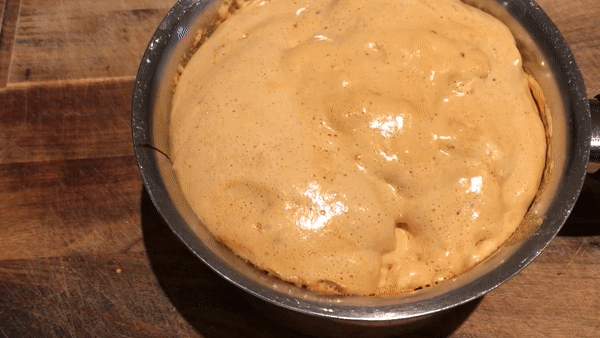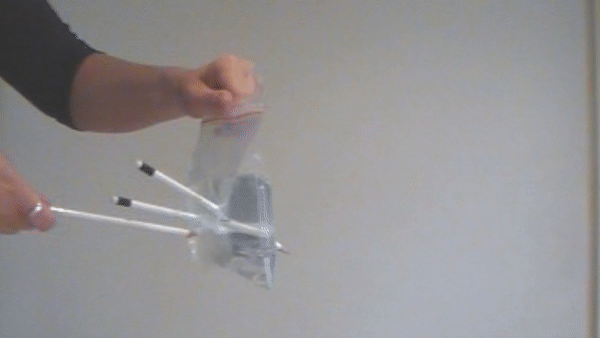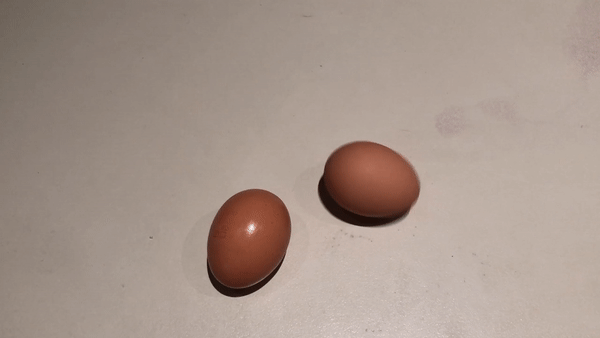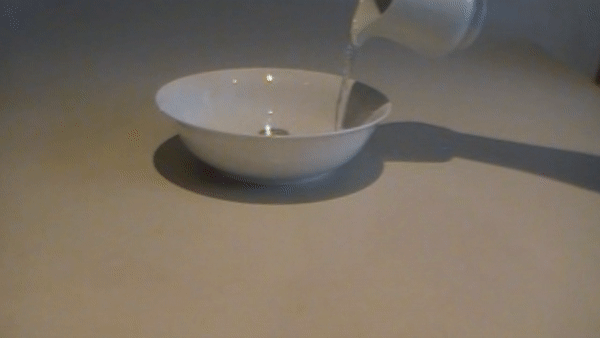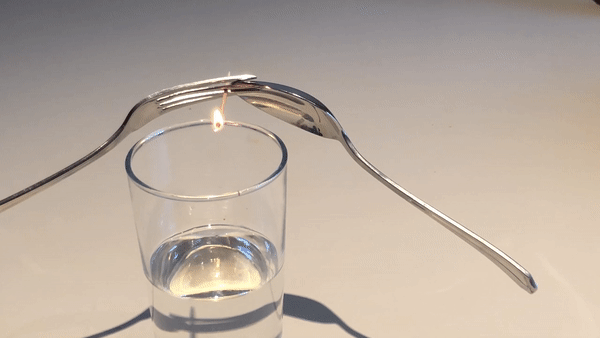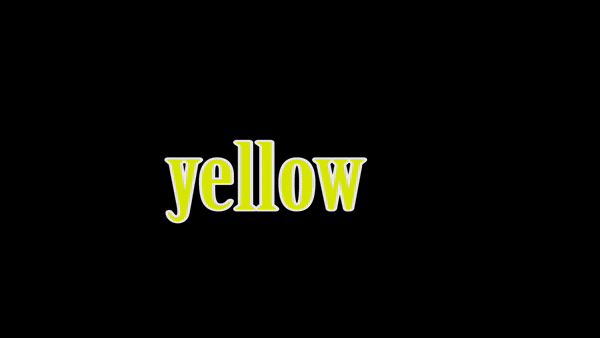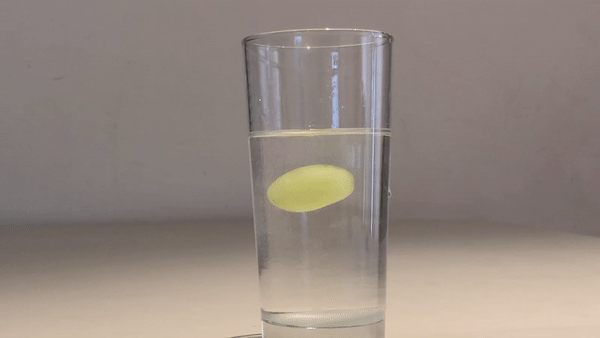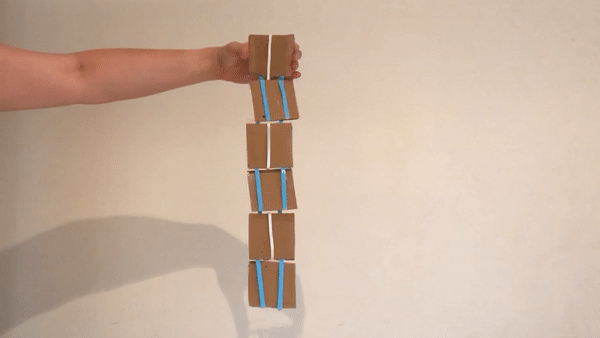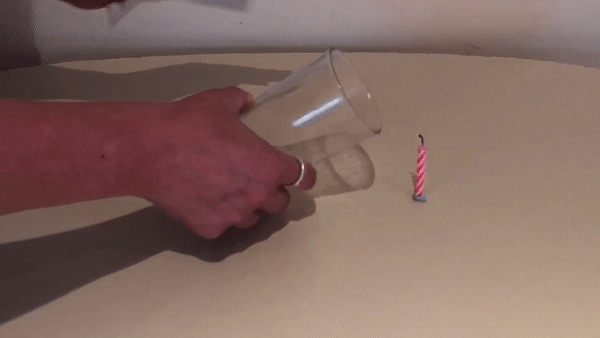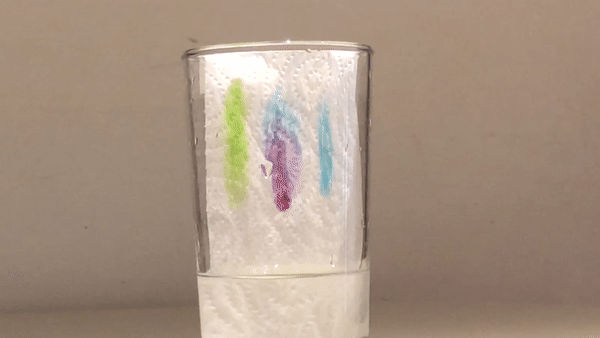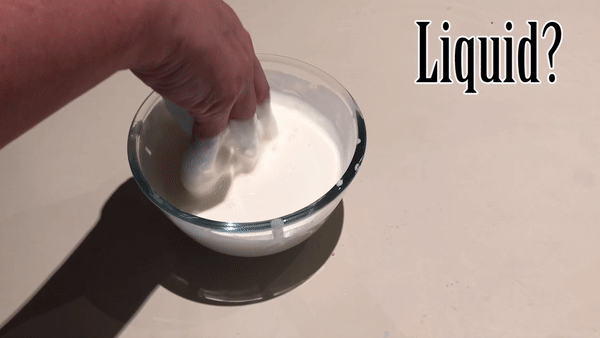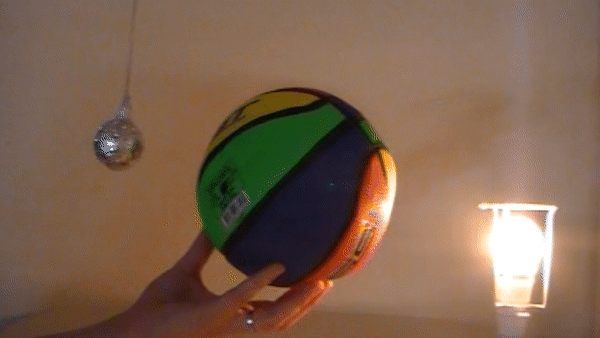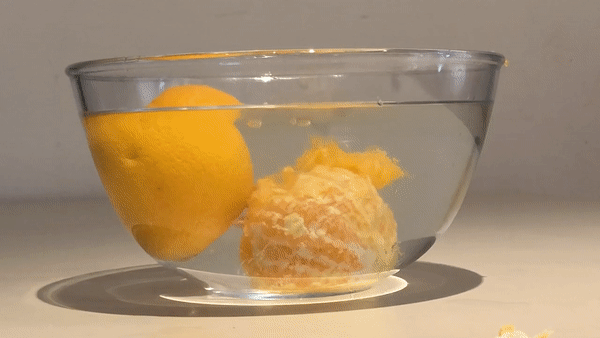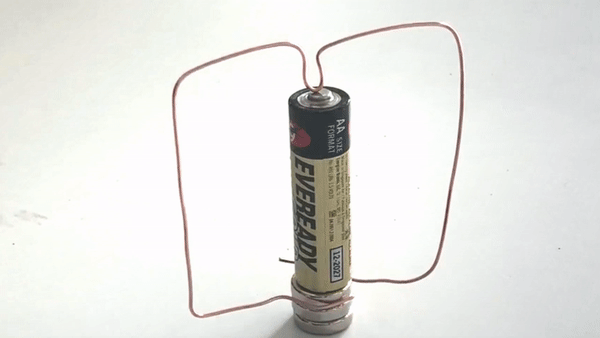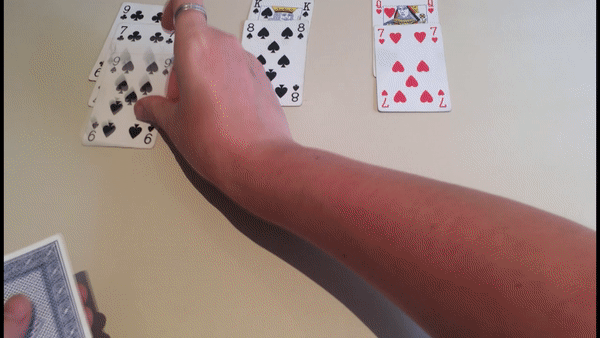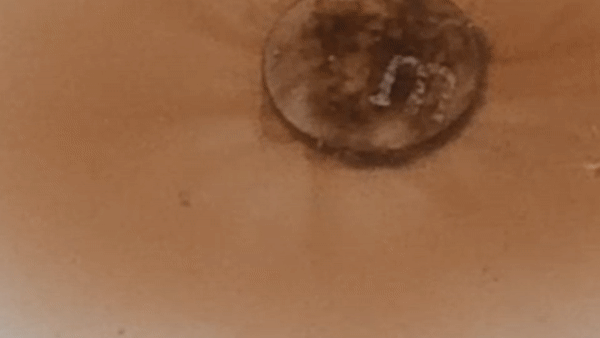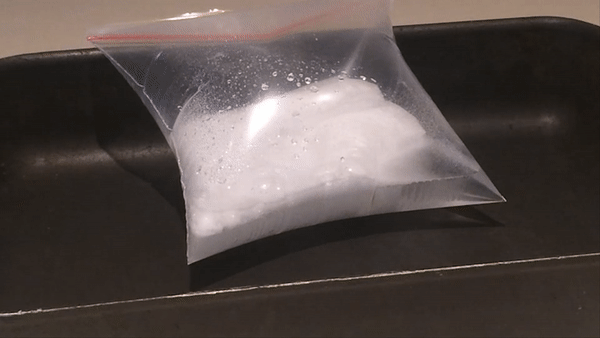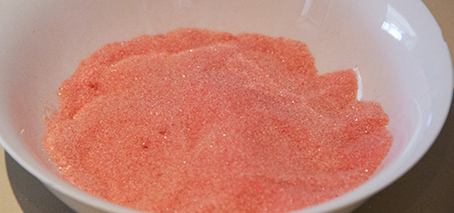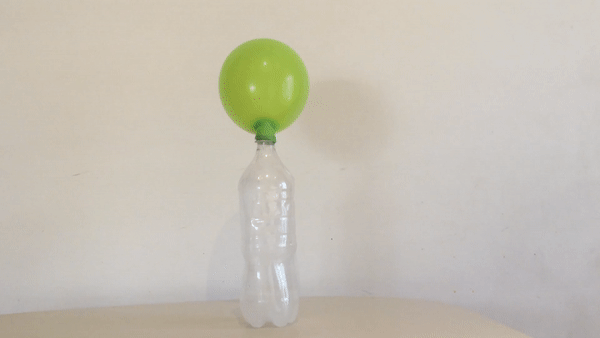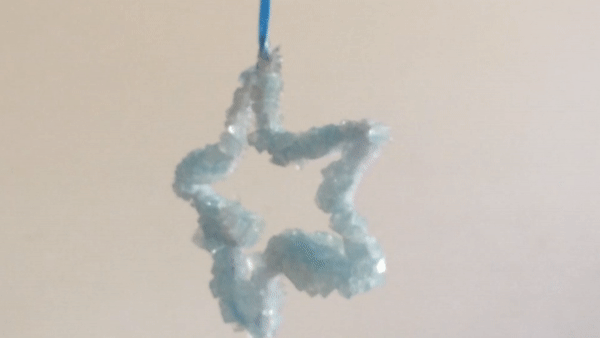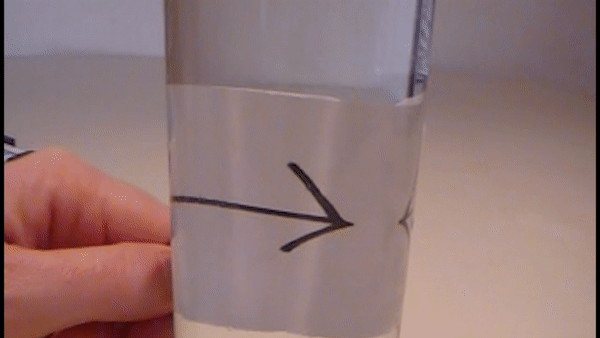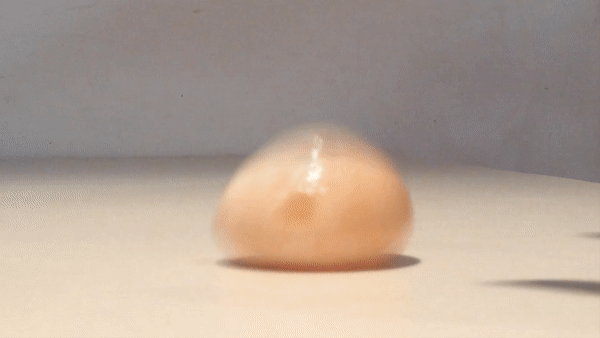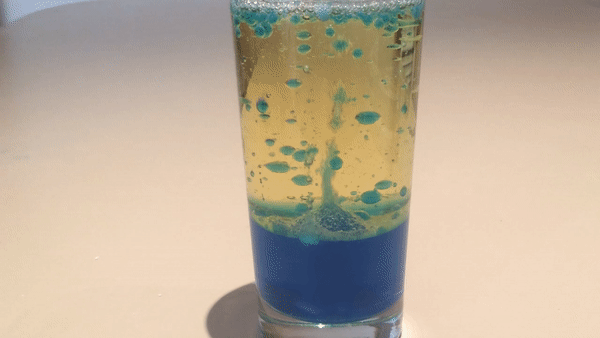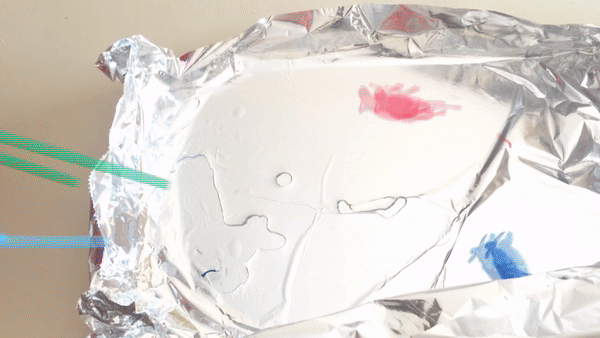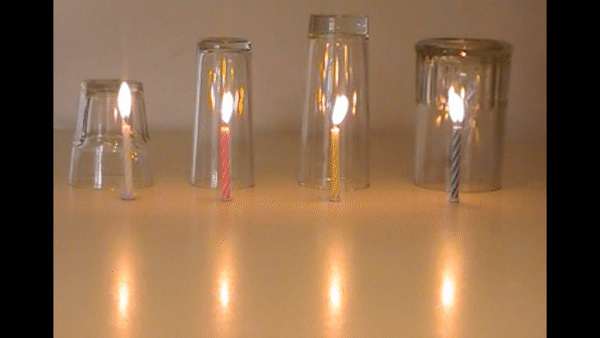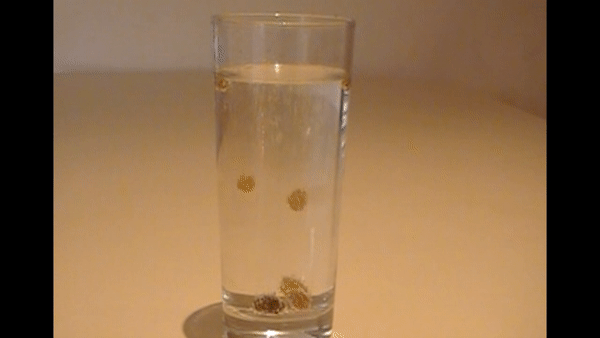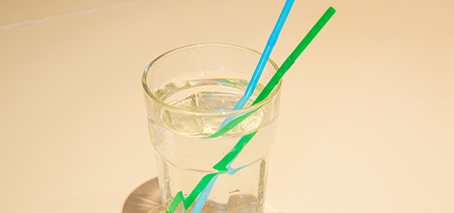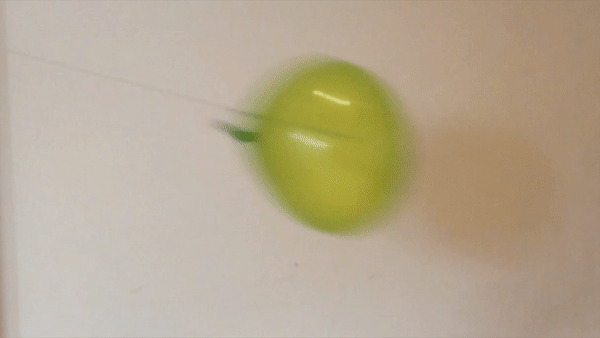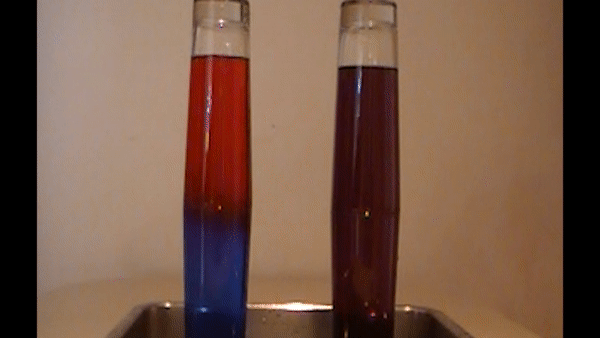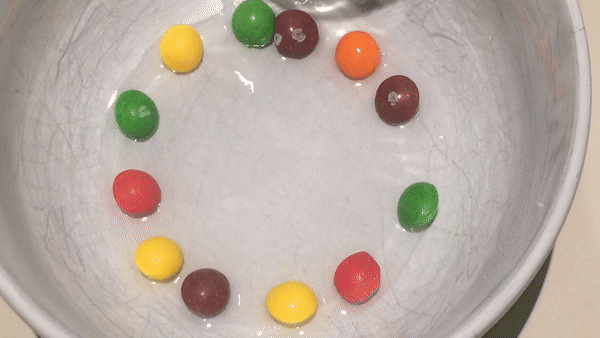Some kitchen science with a tasty treat at the end! What you need: water sugar honey bicarb soda What to do: Put 2 tablespoons of water, 2 tablespoons of honey and 3/4 cup sugar in a saucepan. Put it on a high heat, but do not stir it. Let it boil. Once it starts to turn golden-brown, remove from heat. …
Holey Bag
A bit of science magic – why doesn’t a holey bag leak? What you need: zip lock bag pencils water a dish to catch any accidental spills What to do: Put some water in a zip lock bag and close it tightly. Hold the bag above a dish. Gently push a pencil through the bag, where there is water. You …
Spinning Eggs
What you need: a hard boiled egg a raw egg a hard surface What to do: Spin the hard boiled egg. Then spin the raw egg. Notice the speed at which they spin and which one stops first. Spin the hard boiled egg – once it is moving, touch it to make it stop spinning. Now spin the raw egg …
Appearing Coin
Use the science of refraction to make a coin suddenly appear. Download the pdf of complete activity that includes worksheet tables. Learning Intentions The activity investigates refraction and its applications in the real world. By the end of this activity, students should be able to: draw a diagram to show how the light coming from the coin changes direction (refracts) …
Magic Floating Cutlery
Perform a magic trick using science! Balance a fork and a spoon on the edge of a toothpick, with the other end of the toothpick just touching the rim of a glass. What you need: a fork and a spoon (or two forks) a toothpick matches glass half full of water What to do: The glass needs to have some …
Coloured Words Challenge
This week we use a bit of psychology to issue a challenge – can you say the colour of the text, rather than reading the word? What you need: sheet with words written in different colours – print here. stopwatch or timer What to do: Issue someone the challenge – how fast can you say the colour of each word? …
Hovering Grape
Create some science magic with a grape hovering in the middle of a glass of water. What you need: glass of water sugar spoon grape What to do: Put a grape in a glass of water. It should sink. Add sugar to the water and stir to dissolve the sugar. If the grape sinks, continue to add sugar, stirring the …
Falling Blocks Illusion – Jacob’s Ladder
This demo is a model of a toy, Jacob’s ladder, that presents as a type of illusion. What you need: cardboard scissors sticky tape or glue pen/pencil ruler 2x ribbon What to do: Measure and cut out 12 squares of cardboard with 7.5 cm sides. Measure and cut 110 cm lengths of ribbon. You will need 1x length of one …
Kitchen Extinguisher
Try putting out a candle by making your own fire extinguisher using things you find in the kitchen. What you need: cup/glass vinegar bicarb soda something to cover the top of the glass, eg. a notecard candle What to do: Light the candle. Put 1-2 teaspoons of bicarb soda into your glass. Pour about 1/2 cup of vinegar into your …
Marker Pen Chromatography
Examine what makes up some colours in coloured markers. What you need: a tall glass, about one-third full with water paper towel or coffee filter paper different coloured textas or markers (non-permanent) What to do: Get a long strip of paper towel. Put several dots of different coloured markers in a row about half way up the paper towel. Bend …
Punching Corn Flour
Is it a liquid? Is it a solid? It is possible for it to be both? What you need: corn flour water large bowl What to do: Put 2 cups of corn flour in a bowl. Add 1 cup of water. Use your hands to mix together. It will be sticky. Dip your fingers in slowly and pull them out, …
Phases of the Moon
Use household items to visualise and explain why we see the moon as different shapes. What you need: a light/torch a ball a smaller ball aluminium foil (optional) stick or string (optional) What to do: Cover the smaller ball in aluminium foil and put it on a string or stick (optional) – this is your moon. Turn the light on …
Sinking Oranges
Did you know that whether something floats is not about how much it weighs. We can investigate this using oranges. What you need: 2 oranges large bowl of water What to do: Put one orange into the water. Does it float or sink? Remove the peel on the second orange. Add it to the water. Does it float or sink? …
Electric Motors: Spinning Wire
The spinning wire experiment is actually an experiment that creates a simple motor, known as a homopolar motor, with the use of just three things. Download pdf of activity, that include samples table to record student observations Learning intentions Students will replicate Faraday’s simple electric motor to build on their understanding of the relationship between magnetism and electricity. Aim To …
Card Trick
Using maths, perform a card trick to fool friends and family. What you need: a deck of cards someone to fool What to do: 1. Deal out cards into three columns as shown in the video below, adding one card to the first column, then the second and then the third, and so on. You need to have the deck …
Dissolving M&M’s
If you received too much chocolate for Christmas, and you have a few spare M&M’s that you’d rather experiment with than eat, or maybe you didn’t get enough chocolate and you need an excuse to buy an entire pack of M&M’s (we’re only going to use a few!), this is the experiment for you. What you need: M&M’s bowl water …
Exploding Bags
Something fun to do, but it can cause a bit of a mess, so do this experiment in a tray or outside. What you need: bicarb (baking) soda vinegar zip lock bag tissue a tray (optional) What to do: Put 4 heaped teaspoons of bicarb soda into the tissue. Fold the edges of the tissue over to make a package. …
Sherbert
Science and cooking have a lot of overlap, the mixing of specific amounts of ingredients to form something, and how those ingredients combine. Making sherbert is one example, and a great piece of edible science. What you need: bicarb (baking) soda citric acid icing sugar jelly crystals (optional) container spoons What to do: Combine 1 teaspoon of bicarb soda, 1 …
Self-blowing Balloons
Bicarbonate soda and vinegar are ingredients found in a lot of pantries. And there are so many experiments you can do with them. Here is a simple one, and the only extra things you need are a bottle (for example, an empty soft drink bottle) and a balloon. What you’ll need: bicarbonate (bicarb) soda/baking soda vinegar empty soft drink bottle …
Crystal Star
Something fun and creative that can be done. You can even use your star as a Christmas decoration. Please note, this experiment uses borax. Do not eat borax and wash your hands after using it. What you need: borax (laundry section at the supermarket) boiling water jar or large glass (large enough to fit your star) food dye (optional) stirrer …
Moving Arrows
Watch arrows magically flip direction thanks to refraction of light. Download the pdf of this activity. Learning outcomes Students will recognise the refraction of light at the surfaces of different transparent materials, such as when light travels from air to water or air to glass and be able to apply this understanding to vision and humans’ development of lenses. Materials …
Rubber Eggs
Want to make an egg that you can bounce? How about an egg that is a completely different colour? What you need: an egg vinegar a large glass What to do: Gently place the egg in the glass. Cover the egg with vinegar. Leave the egg in the vinegar for 4 – 7 days. You can remove the vinegar and …
Lava Lamp
Make your own homemade lava lamp. You can make it in a bottle, with a lid if you want to keep it, or just use a tall glass. What you need: clear bottle or tall glass vegetable oil water food dye Alka-Seltzer tablet (found in the medicine aisle in the supermarket) What to do: In a container, add a few …
Dancing Whiteboard Marker
In the spirit of the upcoming Melbourne Cup, we have a horse race as our activity this week, using whiteboard marker horses and some aluminium foil. This is a really simple activity, with the ability to surprise. What you need: whiteboard markers aluminium foil water straws (optional) “horse trainers” (eg. kids – optional) What to do: Get a large piece …
Flame in a Glass
Complete an experiment using different sized glasses to see what happens to the flame under different conditions. What you need: candles matches different sized glasses What to do: Set out some candles in a line. You can use blu-tack to secure them to a surface if they do not have a large base. Light the candles. Turn over the glasses …
Dancing Sultanas
What you need: sultanas or raisins sparkling water or lemonade a glass What to do: Fill the glass with sparkling water or lemonade. Drop in several sultanas (small ones will work best). Watch as the sultanas dance up and down in the water, floating and then sinking. What happens: The sparkling water has the gas carbon dioxide in it (CO2). …
Two Straws
What you need: two straws glass of water, at least half full What to do: Place one straw in the glass of water. Suck some water out of the straw – it’s easy, right? Put the second straw in your mouth, but don’t put the other end in the water, let in hang down by the side of the glass. …
Balloon Rocket
Floating Water
A magic trick that can be performed to amaze an audience, though a little bit of assistance may be required. What you need: four glasses or jars that are the same size two plastic or waxed cards larger than the rim of the glasses – you can use some cardboard and cover it with contact paper a tray hot water …

